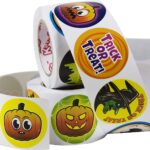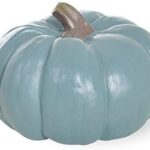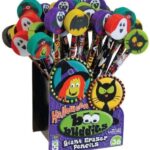
Sign in
Don't have an account with us? Sign up using the form below and get some free bonuses!

When my daughter was three years old, I didn't think anything about fostering childhood resilience when it came to Halloween. For some reason that's unbeknownst to me, she decided that what people do with Halloween candy is...donate it. Who was I to argue with her thoughtful idea? So, for the past two years, we've gathered up her loot and handed it off to a grateful recipient.
I somehow assumed that this is what she'd want to do with it forever. Yeah, just call me naive and we'll get on with things, shall we? In any case, we started Halloween today with our standard plan to donate her candy. She was completely on board.
So, off we went to our downtown "Safe Halloween" where local businesses open their doors to the kids and their parents for a couple of hours, doling out all the good stuff. Now, what makes the "good stuff" tricky for us is that my kiddo has food allergies, so donating her candy has always eliminated any risk to her safety. The Teal Pumpkin Project helps somewhat, but not everyone knows about it or chooses to participate.
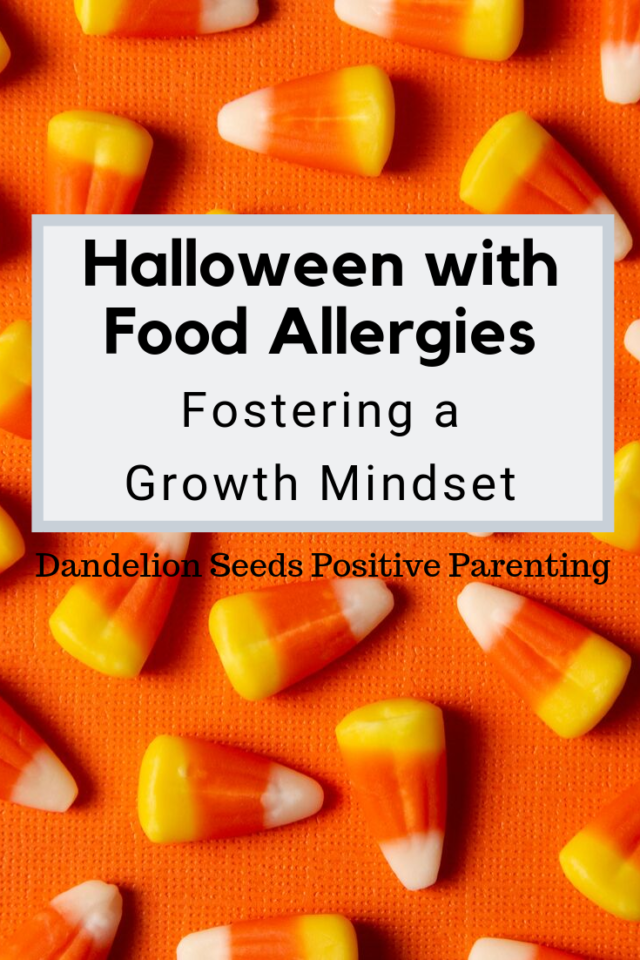
When we were done trick-or-treating, however, she crawled into the backseat of my car, opened her big paper bag, and took a quick whiff of the contents of the sugar-filled booty. I glanced back at her after another minute, and although her hands were still on the outside, her head had disappeared almost entirely into the bag. It smelled good. That's when I started to realize that this year might be
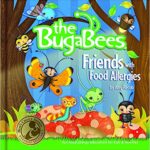
different. She might not want to donate the good smells.
When we got home, she inquired while holding up one of her goodies, "Mommy, can you please read the ingredients to this one?" Suddenly, I realized we were on a very slippery slope. What had been an easy fix to a problem wasn't going to work this year. Since reading The Bugabees (which I love for kids with food allergies), she's learned to ask what's in the food to which she's exposed. (Afflink) That's wonderful.
For better or worse, however, most commercial candies simply aren't options for her health-wise. To compensate for that, we have alternate "safe" treats at our house, usually healthy options. She'd broken off a square of dark chocolate during lunch at home just a few hours earlier as a special treat.
With all that in mind, I read the ingredients. She quickly self-identified that the candy she chose wouldn't work for her. And then she mourned.
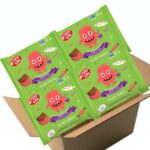
Empathizing, I told her, "I saw how much you really wanted that candy. The feelings I'm guessing you have right now are disappointment and sadness. You can tell me if I'm wrong." It helps kids to give names to feelings to help build emotional intelligence. Dr. John Gottman writes about this, along with a lot of other really insightful suggestions, in this book. It's best when children can name the emotions themselves, but that doesn't always work when they're emotionally flooded. She agreed that I'd guessed correctly.
After holding her and telling her I understood (truly, I do), I realized that this would be another teachable moment. I had to wait, of course, until her brain could find logic and reason, as this important book by Drs. Seigel and Bryson so clearly illustrates. One of the lessons I've learned, though, is that she learns best
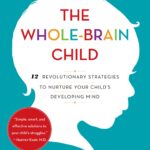
when I give her the space to solve problems for herself--while I fully support her emotionally along the way. This is a life skill she needs.
Knowing the rest of her loot would be similar, I offered, "I wonder what we could do to make the rest of the candy less tempting. Let's think about this." And then I waited, just a bit longer than where I felt comfortable. It's usually in that uncomfortable moment when she suggests something.
"I have an idea, Mommy."
"What is it?"
"Let's make it a science experiment. You grab a bowl and put some hot water in it; I'll put the candy in it and see what happens."
We proceeded to make a warm, gooey, good-smelling experiment while sitting in the middle of our kitchen floor. I hadn't thought of the idea. She had. And when she did, she bought in completely. We marveled at which ones floated or sank, and which ones bubbled (I'm never eating that kind again). She solved the problem in a way that will undoubtedly stay with her much longer than anything I'd have suggested, would have. And I believe she learned something about her own resilience.
Although I don't know if this candy-plan will work again next year, what I do know is this: she's capable of figuring it out. She's strong. I love that she has opportunities to see this.
_______________________________________________________
Click the images for details!
